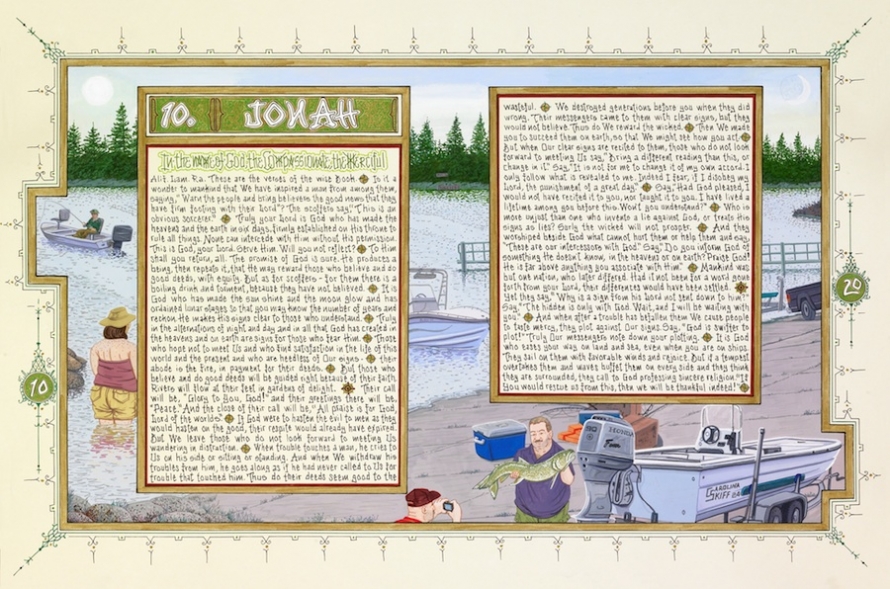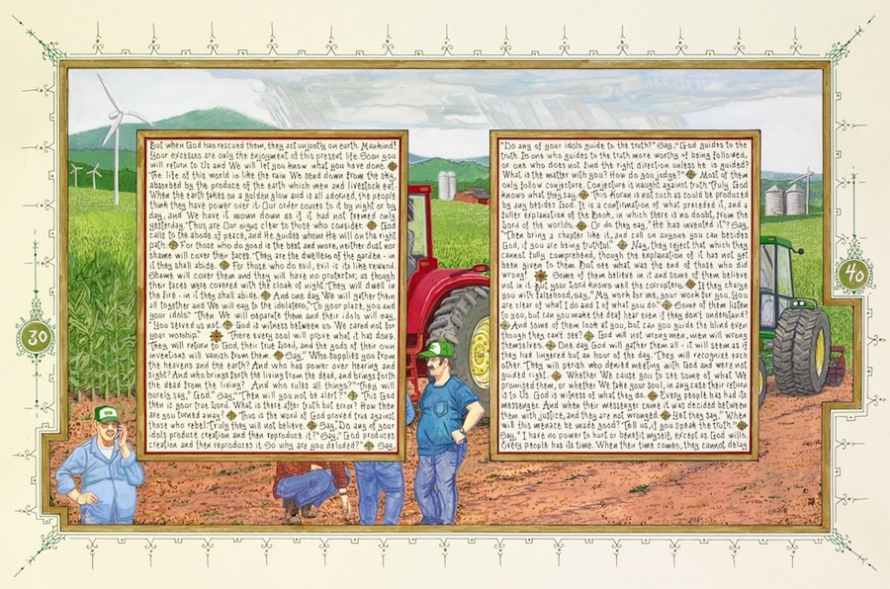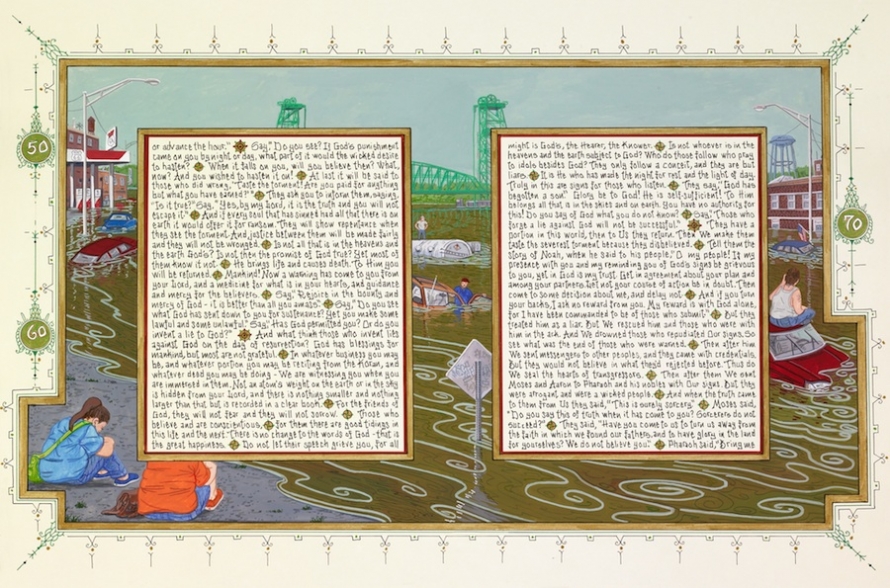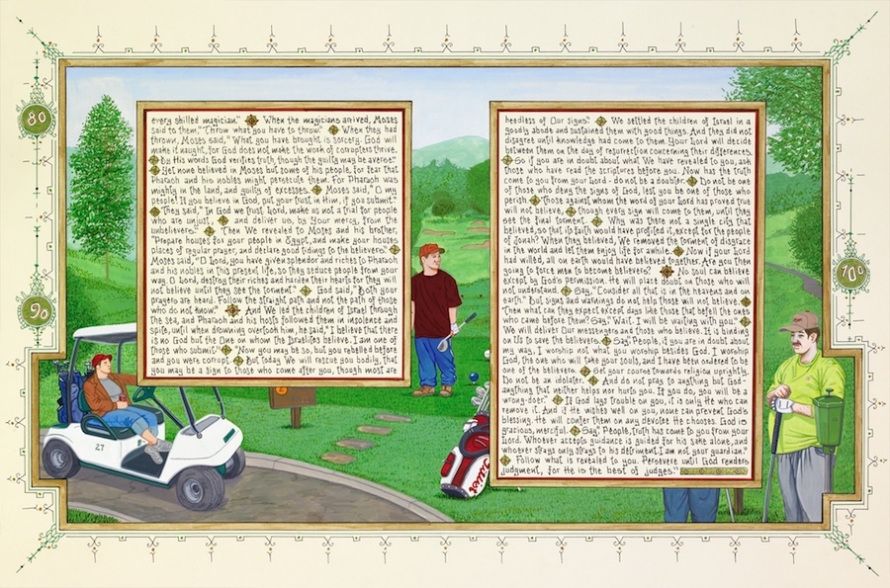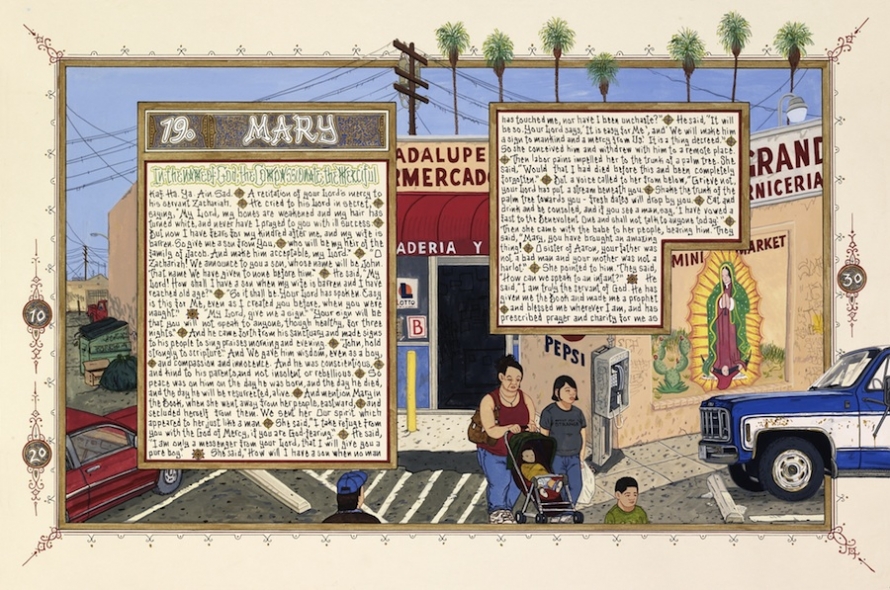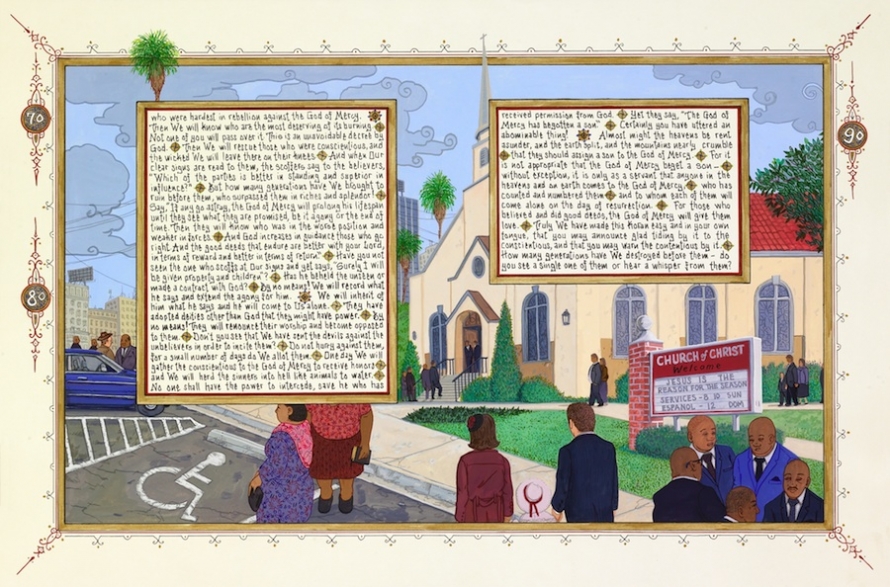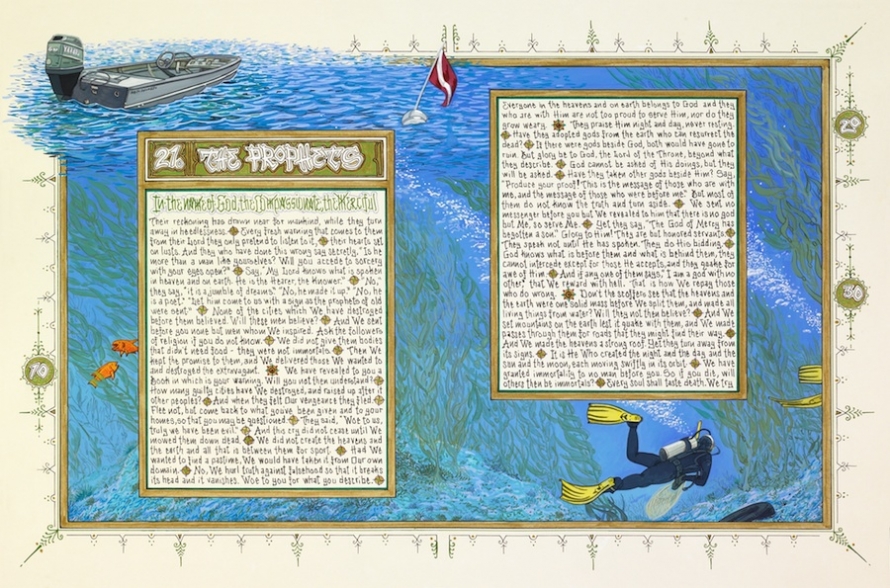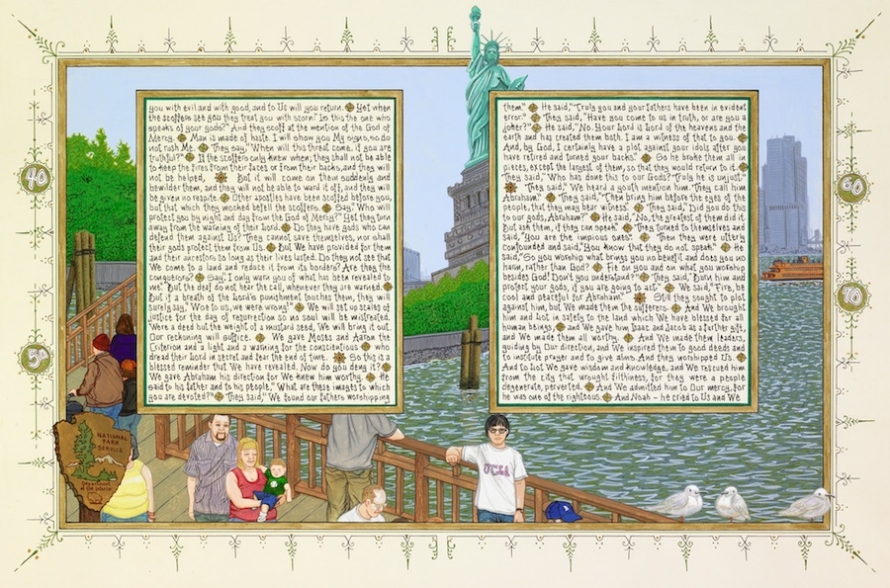For the amount that Islam is discussed in the news, how many of us have read or tried to understand its most important text, the Qur’an? Artist Sandow Birk’s “American Qur’an” project, in which he writes out and illustrates each verse, draws equally from the traditions of calligraphy and graffiti, showing we all share an essential humanity despite any religious differences.
Artist Sandow Birk received his BFA from Otis Art Institute in 1988. He has been the recipient of numerous awards, fellowships, and grants, including the Guggenheim Fellowship, J. Paul Getty Fellowship, and Smithsonian Artist Research Fellowship Award. He has had solo museum exhibitions throughout the U.S. and Germany, and his work is in museum collections including the SFMOMA, the Getty Center, and the New York Historical Society. All images courtesy of the artist and P.P.O.W Gallery, NY, where “American Qur’an” is on view Sept. 10 to Oct. 9, 2010.
Explain the American Qur’an project.
The Holy Qur’an is arguably the most important book in the world right now. Our nation is in the midst of two wars in Islamic nations, hundreds of thousands of our troops are involved, our political landscape has been altered, and our daily lives are all affected by events connected to the Qur’an, and yet I knew nothing about it. I had no idea what was in it. So I decided I should find out for myself what the Qur’an is and what its message might mean for an average American like me.
As an artist, the project is my personal attempt to create an entirely hand-written and hand-decorated illuminated manuscript in the 21st century. An attempt to make something entirely by hand, based on traditional techniques and styles, but which still is about life in America right now. When completed, my project will be an entirely hand-transcribed English language adaptation of the Qur’an, illuminated with scenes of contemporary life in America that relate to the message of the text.
How did you create these images? How did you match the images to the text?
I create the images in my own style of illumination, which is drawn from traditional Islamic book decorations, as well as Western illuminated manuscript traditions, and the very “American” calligraphy of the cholo graffiti from my neighborhood in Los Angeles.
The images are my own personal reflections about the message in the text of each chapter, or surah, and my pondering what that message means to me in my daily life. The images are metaphors for the imagery of the text. I try to think of things in our lives that are symbolic or emblematic of the text, things that present the message in a more easily graspable way, things that average Americans can relate to.
Where did you get the translation of the verses?
For legal, copyright reasons, I’ve been largely using the English translation of John Meadows Rodwell from 1861. However, when that English is obscure or obtuse, I have used some elements from other copyright-free translations.
The many tiny details in these images are reminiscent of Medieval miniatures. What are your artistic inspirations?
Well, definitely Western manuscripts, but I’ve also spent a lot of time looking at historic qur’ans and their amazing, hand-done artwork. Besides trips to many Islamic nations, I’ve visited the Chester Beatty Library in Dublin several times, which has one of the best collections of ancient qur’ans and Islamic books in the world, including some amazing Mughal albums. But I’m also influenced and inspired by my own city, by my neighborhood, by graffiti, and everything else that I’m bombarded with by living in America.
How has the scandal around the Danish Mohammed cartoon changed public reception to this project?
I’ve been working on this project since before the Danish cartoon fiasco several years ago, but it was only last year that my project was first exhibited publicly in Los Angeles and San Francisco. The reaction to it has been mostly of surprise, curiosity, and interest once people have seen the exhibitions. In California, the gallery shows were visited by large numbers of Muslims and the reaction was very encouraging.
Do you hope that these works will help demystify Islam to American viewers?
Well, I would be more humble in my aspirations, but I guess the answer is yes. Like I said, I began the project out of personal interest and a desire to learn more about Islam and the Qur’an by myself, and to think about how I might understand it in relation to my own life. But, yes, I do sort of posit myself as an “average American” and I do hope that it might lead more Americans to understand more about Islam. More understanding can only be a good thing.
What are you working on now?
Well, this project is only half complete. I’m going to carry on working on it for a couple more years before I’m finished, and then it will become a book and there will be exhibitions of the completed project. But I’m also working on other projects simultaneously. For example, I recently finished a huge drawing of a proposed “monument” to the Constitution of the United States, which was acquired by the Metropolitan Museum. And I’m working on a public project for the new SFJAZZ center being built in San Francisco. And other things.
